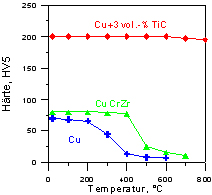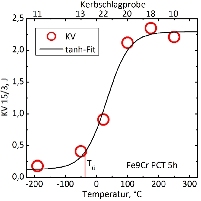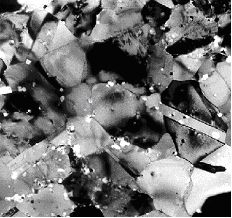
As an objective in the development of dispersion strengthened materials, heat and creep resistance have to be enhanced thereby simultaneously maintaining typical properties of the metallic basic matrix (e.g. thermal conductivity, corrosion resistance). Thus, only a very few rate of the volume for the disperse secondary phase (about <5 volume percent, as a rule oxides, carbides, nitrides) has to be imparted at a low size (dispersoid size <100 nm). At Fraunhofer IFAM Dresden, dispersion solidified materials are developed by means of powder metallurgical technologies. High-energy grinding is suited to embed nanometer sized dispersoids into metallic matrices. The powders can be processed either in various lab mills or - in greater quantities - on a centrifugal oscillatory mill. Manufacture of the semi-finished material is supported by pressure upon high-temperature isostatic pressing or dispersion.
Taking dispersion strengthened copper, the combination of high conductivity and high temperature or creep resistance could be evidenced. (see TEM image and diagram below)
 Fraunhofer Institute for Manufacturing Technology and Advanced Materials IFAM
Fraunhofer Institute for Manufacturing Technology and Advanced Materials IFAM

